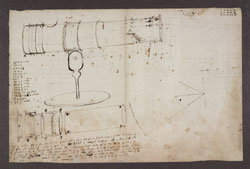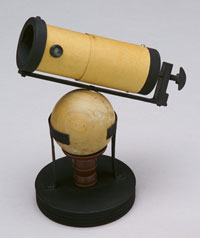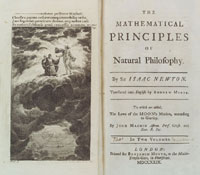The Gospel
According to Newton
 Newton’s drawing of the reflecting telescope
Newton’s drawing of the reflecting telescope
that
brought him fame in 1668 – Cambridge
University Library,
MS ADD 3970, fols.
591r–592v
Newton
was thrust into the international scientific community in late 1671 with the
unveiling of his sensational miniature reflecting telescope before the Royal
Society of London. Gratified by the enthusiastic reception of his “toy,” Newton
consented to publish his revolutionary theory of light and colors. The ensuing
controversies over the verity of the theory made Newton vow never to appear
in print again. Only owing to the considerable scientific and diplomatic skills
of Edmond Halley did Newton agree to write, then publish, the Principia (1687).
Seventeen more years elapsed before the Opticks (1704) finally appeared.
 A replica of Newton’s telescope –
A replica of Newton’s telescope –
Courtesy of Adler Planetarium &
Astronomy Museum, Chicago, Illinois
Both works generated as much excitement as controversy. Subsequent editions
clarified and elaborated on certain Newtonian concepts, as well as responded
to criticisms. The eruption of the calculus priority dispute between Newton
and Gottfried Wilhelm Leibniz complicated the response to the two works, prejudicing
Leibniz’s disciples against the central tenets of Newton’s masterpieces,
and causing a rift between English and Continental mathematicians.
 English translation of the Principia
English translation of the Principia
(London, 1729) – Rare Books
Division, NYPL
Ironically,
those very disciples proceeded to translate the Principia into the
Leibnizian form of the calculus (differential equations), thus creating the
necessary
mathematical
tools for the future assimilation and advancement of Newton’s ideas.
Newton’s English disciples, for their part, began rendering the Opticks and, especially, the Principia into the more accessible format of
commentaries, aimed at those
with only a modicum of mathematical background.



